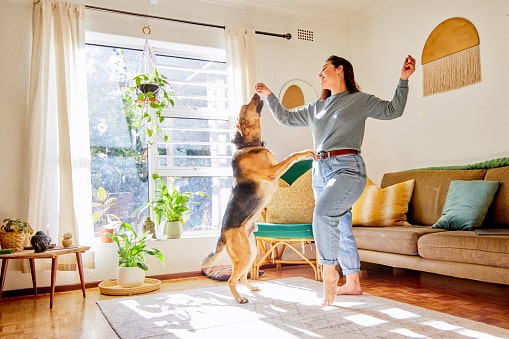This post contains affiliate links, we'll earn compensation if you make a purchase using them at no additional cost to you 😊
Abscesses can have many reasons for developing anywhere on your dog’s body. The most general kinds of abscesses can be treated quickly and easily; therefore, treating an abscess on a dog at home is not that uncommon.
As a dedicated dog parent who has used remedies to treat my dogs at home for common injuries, I have shared the cure to treat an abscess on a dog at home thoroughly in this article.
Additionally, I have also covered more details that will help you get a detailed understanding.
On that note, let’s discover how to treat an abscess on a dog at home!
Note: Certain rare abscess types, which are primarily internal, have the potential to be fatal if left untreated. Dogs suffer greatly from such abscesses. It’s always advisable to consult a veterinarian to determine the best course of action for your dog.
Firstly, What Exactly Is An Abscess?
The Pus-filled lumps called abscesses can develop anywhere on your dog’s body. The reasons for a dog abscess are bacteria, mites, and parasites.

It is actually a way for the body to protect itself by gathering an
infection-like lump where white blood cells move into and collect tissue.
If an abscess has developed on the skin’s surface or the skin has peeled away, you will likely notice a red, raised bump. You will typically notice a swell under the skin. Also, keep in mind that a dog abscess is soft and warm.
Right Way To Treat an Abscess on a Dog at Home
With the above tools, it is easier to treat an abscess at home just by following the simple steps given below.
Step 1: Apply Pressure And Squeeze
Use a heating pad (a towel drenched in hot or warm water) and firmly press down and squeeze the abscess if it hasn’t ruptured on its own.
Depending on the size, it will probably require quite a few taps to cause it to drain. As pus bursts, it will pour like juice, so be careful to place another towel beneath the abscessed area.
Step 2: Give Preference To Removing Pus
Maintain its balance. The center of a pit may or may not have pus gathered there. If any, be careful to get rid of all of it.
Step 3: Clean It All Out!
Clean like an absolute mad person. An abscess on a dog shouldn’t be covered. It must recover from the inside out, just like a puncture wound.
That implies that you will initially have to clean up continually as pus continues to ooze from the wound.
Follow the cleaning discharge method given below for a better approach to cleaning it all out.
The Clean-Up Discharge Method
The following method is used for cleaning the abscess in detail at home without compromising hygiene and worsening the injury.
Step 1: Sterilize Your Hands
To start the cleaning-up process on the abscess wound, wash your hands with a surgical scrub or sterilize your hands with rubbing alcohol before and after.
Step 2: Flush The Wound
Once your hands are completely clean and sterilized, take some saline solution in a syringe and flush out the wound by spraying the syringe all over the wound.
Step 3: Clean The Abscess Portion
Next, to avoid making the skin painful and inflamed, keep cleaning the abscess portion by spraying the saline syringe at intervals several times. You can also wipe the wound gently with saline-soaked gauze away from the actual wound opening.
Step 4: Clean Your Dog’s Bedding
After the cleaning procedure, make sure to give your dog a clean bedding area and a clean blanket or bed to sleep over. Also, change the bedding every day for a few days to avoid infecting your dog’s wound with bacteria.
What Are The Basic Symptoms Of An Abscess?
Here are some additional symptoms that your dog may have an abscess in addition to the development of a large, red lump on his body:
- Dramatic fall in appetite.
- The impacted area is where the heat is coming from.
- Unexpected uneasiness or discomfort.
- Constant occurrences of fever.
- The damaged area is giving off a foul smell.
- Licking or chewing at a specific bodily part.
- Hair loss occurs suddenly in and around the affected area.
How To Diagnose An Abscess?
As mentioned above, by analyzing the symptoms, you can detect that your dog has developed an abscess on his body. However, you should get it diagnosed by a doctor before you decide to treat it at home or at a vet’s clinic.
I will suggest you get it confirmed by a professional Veterinarian to avoid any mistreatment of the wound.
Once you take your dog to the vet, they will take a swab from the wound or the infected portion to find out what kind of bacteria is present in the wound. Further, they will perform a blood test on your dog to find out whether there’s an infection in the blood.
The blood test is done to determine internal abscess as it’s more difficult to diagnose and needs detailed and advanced diagnostic procedures.
Can An Abscess Be Treated At Home?
Find out from your veterinarian if the abscess can be cleaned and treated at home or whether it requires medical treatment at a clinic.

To determine what drugs to give your dog and identify the infection’s real cause, the veterinarian will likely still need to examine the abscess on your dog and perform some tests.
If you are unable to maintain conditions with extreme care or if the abscess is really large and you are unable to drain it on your own, your dog will require professional treatment.
If so, you will perform a surgical procedure. Even if your veterinarian advises you to treat the dog’s abscess at home, it is important first to have them demonstrate how to do so.
Moreover, it is usually a good idea to do a full blood test on your dog if there is a skin abscess that is evident.
Also, it may occasionally be necessary to obtain samples of it to find out why it causes pus. Only your doctor is authorized to treat internal abscesses.
Factors To Consider While Treating Abscess On A Dog At Home!
- If you notice any symptoms of a systemic infection, consult a veterinarian. These include a fever, appetite loss, listlessness, or extreme pain.
- See a veterinarian if, after cleaning and treatment, the abscess does not start to heal in a few days.
- A veterinarian should be consulted for abscesses close to the genitalia, eyes, ears, or anus.
- In order to fully eliminate pus and germs leaking from the wound and to avoid introducing new contaminants, sanitize the spot you are dealing with both before and after treating the abscess.
- Draining abscesses should not be covered with bandages that stop pus from flowing or allowed to seal over too soon.
What Are The Right Tools To Treat An Abscess?
We have some Homemade solutions that will help heal your dog’s abscess damage if you use them to treat the abscess that is hurting your dog.
So, the equipment that you require to treat the abscess on your dog is listed below.
1. Alcohol For Sterilizing
Your hand that will come into contact with the abscess wound can be sterilized with alcohol. Anything that was touched by the wound’s fluids is presumably included.
2. Saline Solution To Rinse
The saline solution will be useful for cleaning the skin cracks and the area around the wound.
3. Wound Ointment
When you have removed the abscess fluid, apply a sterile ointment. Using an ointment will relieve your dog’s discomfort and stop the itching surrounding the injury.
What Are The Causes Of Abscesses?
In reaction to microorganisms, abscesses develop. Injuries like scratches, bites, or ingrowing hair can cause abscesses under the skin when the bacteria Pasteurella Multocida or Staphylococcus Intermedius invade the area.
In addition, tooth injury in the ear, sinus, liver (after a blood infection), pancreas, lungs, or brain (after a mouth infection) can result in canine abscesses at the tooth’s root.
A few other serious causes of abscess that rare but still, are important to be aware of are given below:
- Dog liver abscesses are uncommon. usually brought on by a blood infection caused by germs. Lethargy, fever, decreased appetite, and vomiting are among the symptoms.
- Dog lung abscesses are extremely uncommon. They are typically brought on by trauma, severe pneumonia, or inhaling foreign objects. The symptoms include reduced appetite, coughing, lethargic behavior, and fever.
- In dogs, brain abscesses are uncommon. Trauma or inner ear infections are among the causes. Seizures, fever, and altered behavior are among the symptoms.
- Abscesses that develop at the site of incision are known as post-surgical responses. Longer surgeries, wet wounds from licking, and improperly cut and cleaned wounds are among the risks. Plus, discomfort and swelling are among the symptoms.
How Does An Abscess Develop In Dogs?
Animals with higher injury rates are more prone to become infected and, as a result, develop an abscess. Active dogs are prone to come across sharp, unclean objects that can bite their jaws and get cuts.
When out for a stroll, if your dog accidentally ingests or breathes in grass seeds and other plant particles, especially in the spring and summer.
These plant particles can potentially infect lung tissue, causing a dig to develop abscess.
Some dog breeds, such as Labradors and English Bulldogs, are more likely to develop abscesses because of their short, stiff coat hair.
Tips To Prevent Your Dog From Developing An Abscess!
Before you go through the tips to prevent an abscess, you should know that not all abscesses are preventable. However, dog parents can still take the following safety measures in order to reduce the chances of developing abscesses in their dogs:
- If your dog has been bitten by any other animal or even been scratched, you need to take your dog to the vet. Getting some treatment done on the wound is necessary to avoid developing abscess.
- Prevent your dog from going into areas with grass seeds spread everywhere during the spring season.
- Make sure to check your dog’s fur coat and body parts, like the area between their toes, and clean it thoroughly, as grass seeds or other foreign particles might be stuck on them.
- When playing outdoors with your dog, avoid using sticks.
- Visit the vet every 6 months to get your dog’s teeth checked.
- If your dog doesn’t like going to the vet, you can brush your teeth with dog toothpaste or specially-made dental dog food.
- If your dog is suffering from anal gland issues, you’ll have to get them checked and emptied and use fiber supplements.
- Getting your dog neutered is the best way to prevent prostate abscesses from developing on your dog.
- Feed your dog with healthy dog food and keep him in healthy condition.
Related Read:
Conclusion: Check The Steps To Treat An Abscess On A Dog At Home
The remedies mentioned above are the safest and most effective ways to treat an abscess on a dog at home. However, these methods only work if the abscess is minor and treatable at home.
Also, if you decide to treat your dog’s abscess wound at home, ensure that you use sterile tools and follow the procedure carefully to avoid hurting your dog.
Note: You should ALWAYS speak to a professional and get help from a veterinarian. They can assist you with diagnosing your dog and providing the right treatment, even if it’s at home.
FAQs
Untreated abscesses will enlarge until they break through the skin or enter the body, infecting the blood or any other tissues as they do so.
Tiny skin abscesses could become visible, drain, and heal themselves. It is advisable to have a veterinarian examine the dog if there is anything.
An animal bite is among the most frequent causes. Depending on the germs present and how deep the bite was, an abscess may form as a result of the biting damage, which brings bacteria into the wound.
An unpleasant abscess may be elevated, swollen, and red. It’s possible that the skin above the abscess’s center is thin. Because there is pus beneath the skin’s surface, it may appear yellow or white. It may be tender and difficult to touch.
Amoxicillin/clavulanate, Cephalexin, and Clindamycin are the common antibiotics medicine used to treat abscesses in dogs.
In cases of minor abscesses on dogs, the wound might break, open up, drain out all the fluid there is, and heal on its own.


